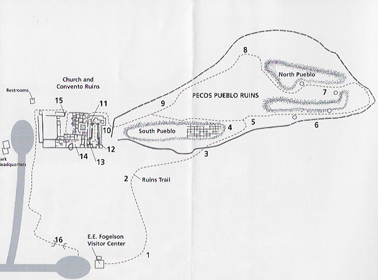
In front of Visitor Center (N35D33'01.008 X W105D41'10.247)
Flowers first observed: 9/12/17
The Plants w/Flowers

The Flower

Distribution
"Found in waste areas, roadsides, escaped from cultivated areas, below 5,000 ft (1524 m); flowering April-October. Distribution: Introduced from Eurasia, widely cultivated across the western United States." (SEINet)
Description
"Herbaceous annuals to perennials, to 90 cm tall, stems decumbent to erect and ascending, much branched, herbage glabrous to puberulent. Leaves: Alternate, pinnately trifoliate, leaflets lanceolate to obovate, 10-25 mm long, sharply serrate at the tip, margins dentate, petioles 5-20 mm long, stipules 5-8 mm long, lanceolate, entire, or toothed. Flowers: Small, greenish-yellow or violet to deep purple, corolla 6-12 mm long, calyx 5-6 mm long, stamens with 1 separate from the other 9 (diadelphous), flowers borne in dense, subcapitate racemes. Fruits: Pods spirally coiled, glabrous, indehiscent. Seeds several. Ecology: Found in waste areas, roadsides, escaped from cultivated areas, below 5,000 ft (1524 m); flowering April-October." (SEINet)
Ethnobotanical Uses
"A poultice of the heated leaves applied to the ear for earaches. The plant was cultivated, harvested, dried, stacked or stored in hogans and fed to livestock in winter, the plants were placed above and below black tree lichen and camas in cooking pits for the sweet flavor, and the plant was used for horse feed." (SEINet)
Internet Links